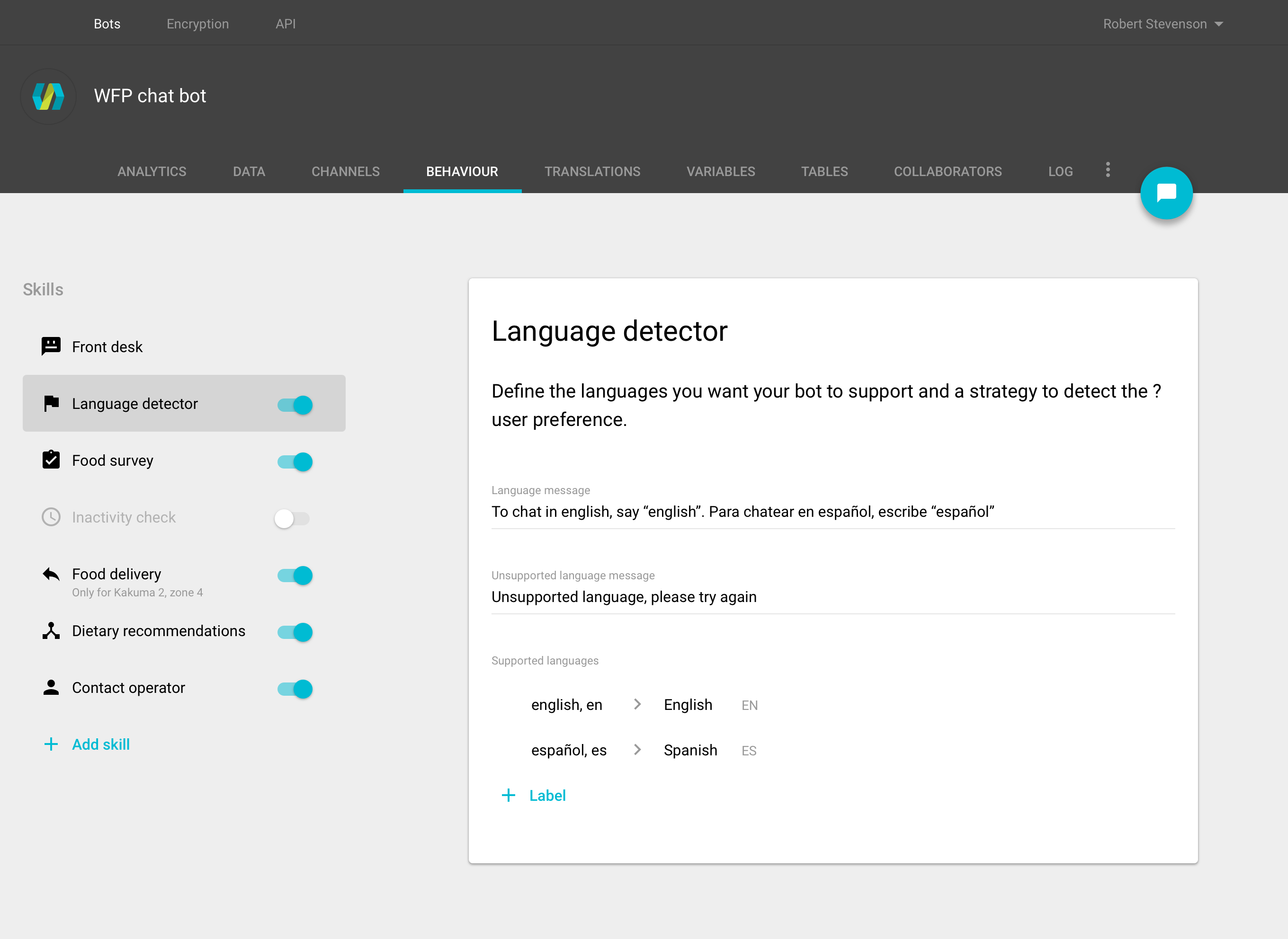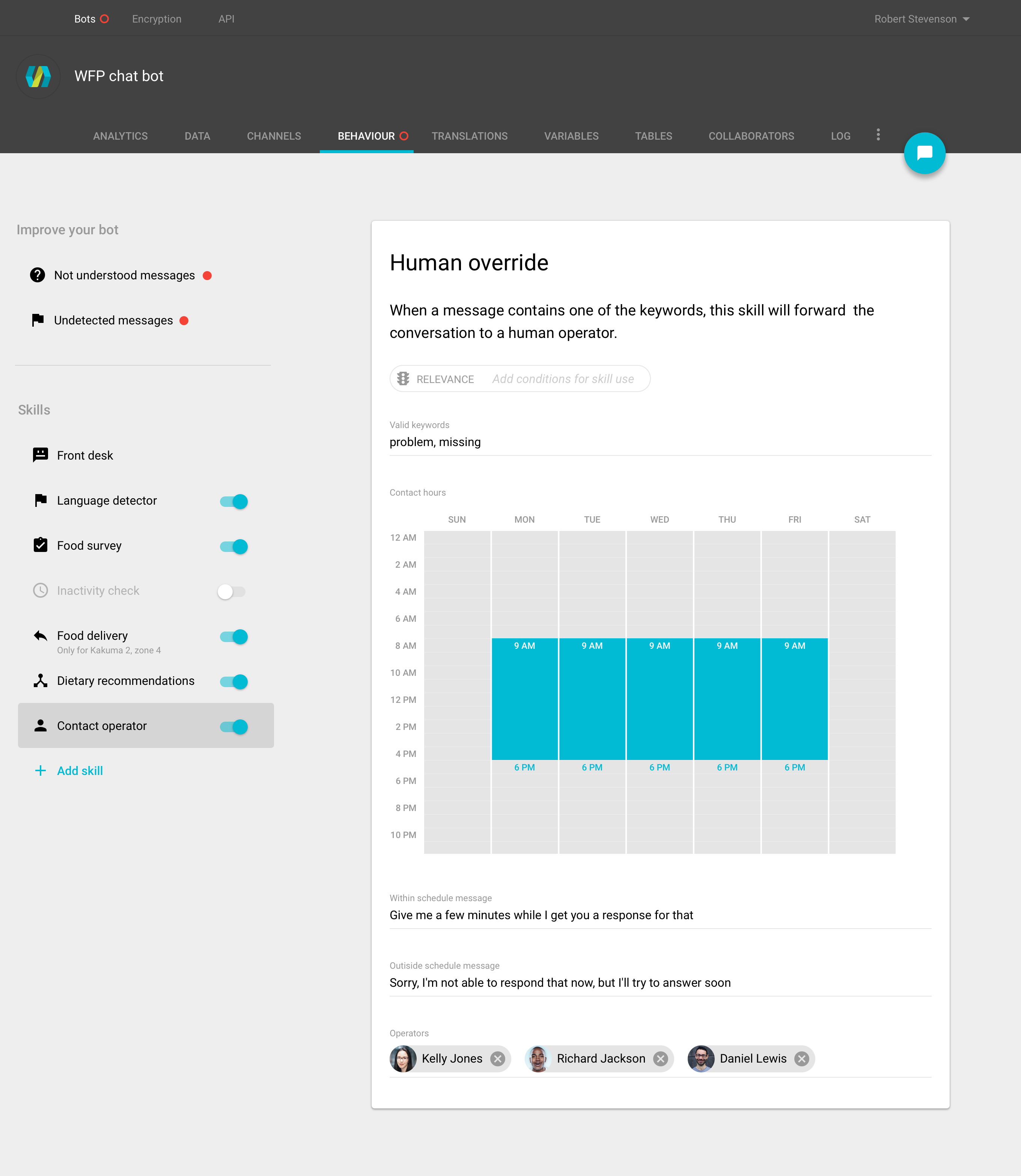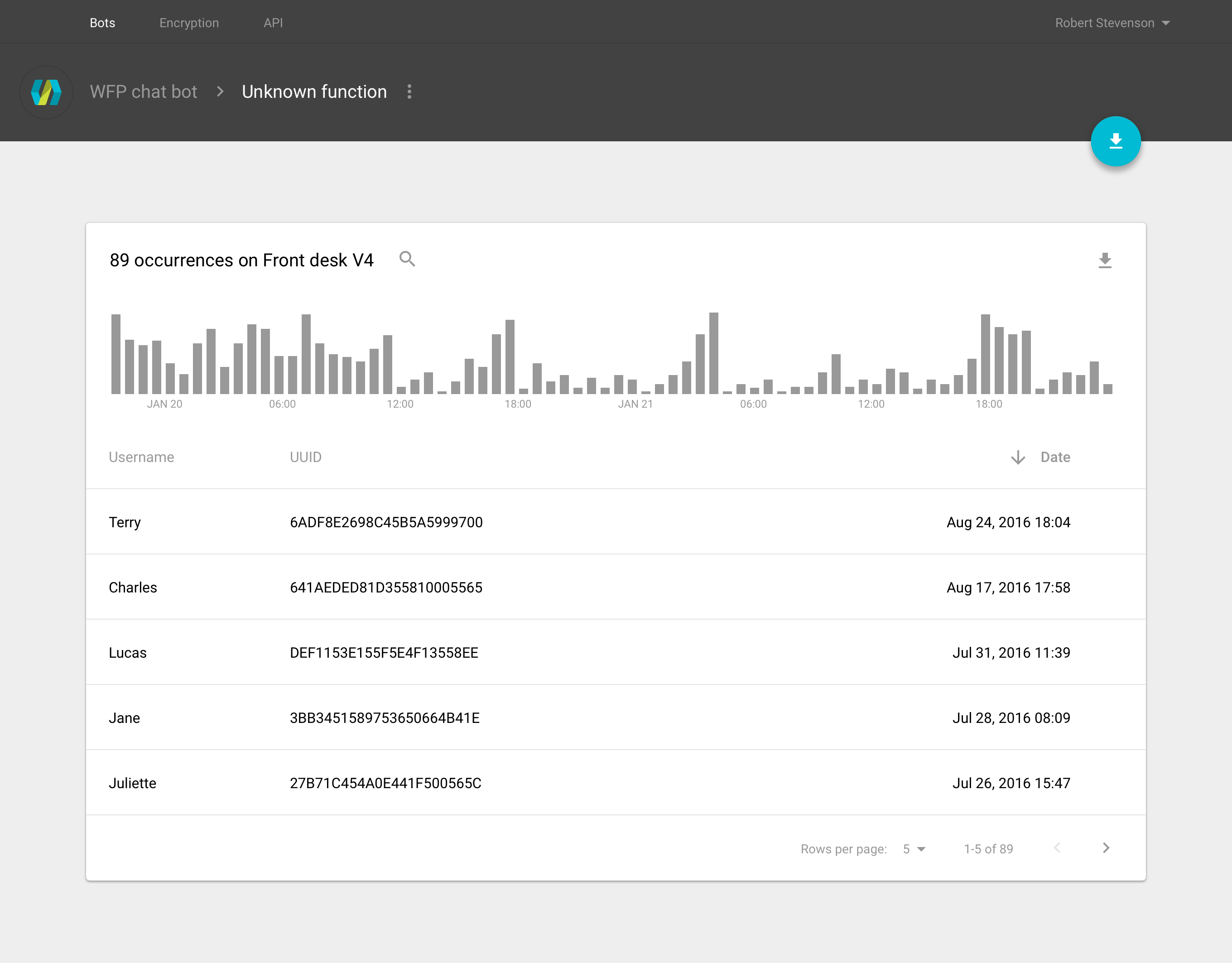Kenya
To get to know our users better and start defining the design of the Food Bot, we travelled to the Kakuma Refugee Camp, where we spent a few days collaborating with WFP staff and youth leaders in the refugee camp to understand how to create a user-friendly chatbot to meet their needs.
We first worked with a small group of people, to understand how they used the technology. We employed a popular prototype technique called ‘Wizard of Oz’. This type of human-centered approach allowed us to quickly learn what types of information the Kakuma refugees were interested in receiving, as well as how they asked questions.
During the field test, we also confirmed our hypothesis that chatbot conversations need to be as light as possible (not using too many pictures, menus, or emoticons) in order to minimize data charges and make conversations possible for low-bandwidth network. To reach as many people as possible, we decided to create a bot that would operate on a popular messaging app, like Facebook Messenger, so people could take our surveys on a platform they already use.



















